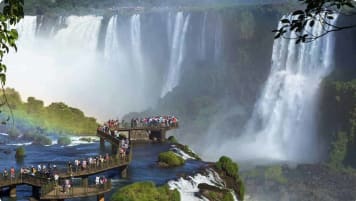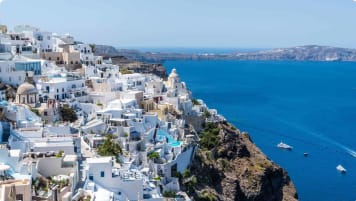Discover Chile and the Easter Islands: The Definitive Guide
Chile is an extraordinary country, covered every inch by scenic landscapes, incredible wildlife, and long-standing culture. The tumultuous history undertaken since the time of Spanish colonisation and on the road to a sustainable democracy has…
21 Feb 19 · 11 mins read
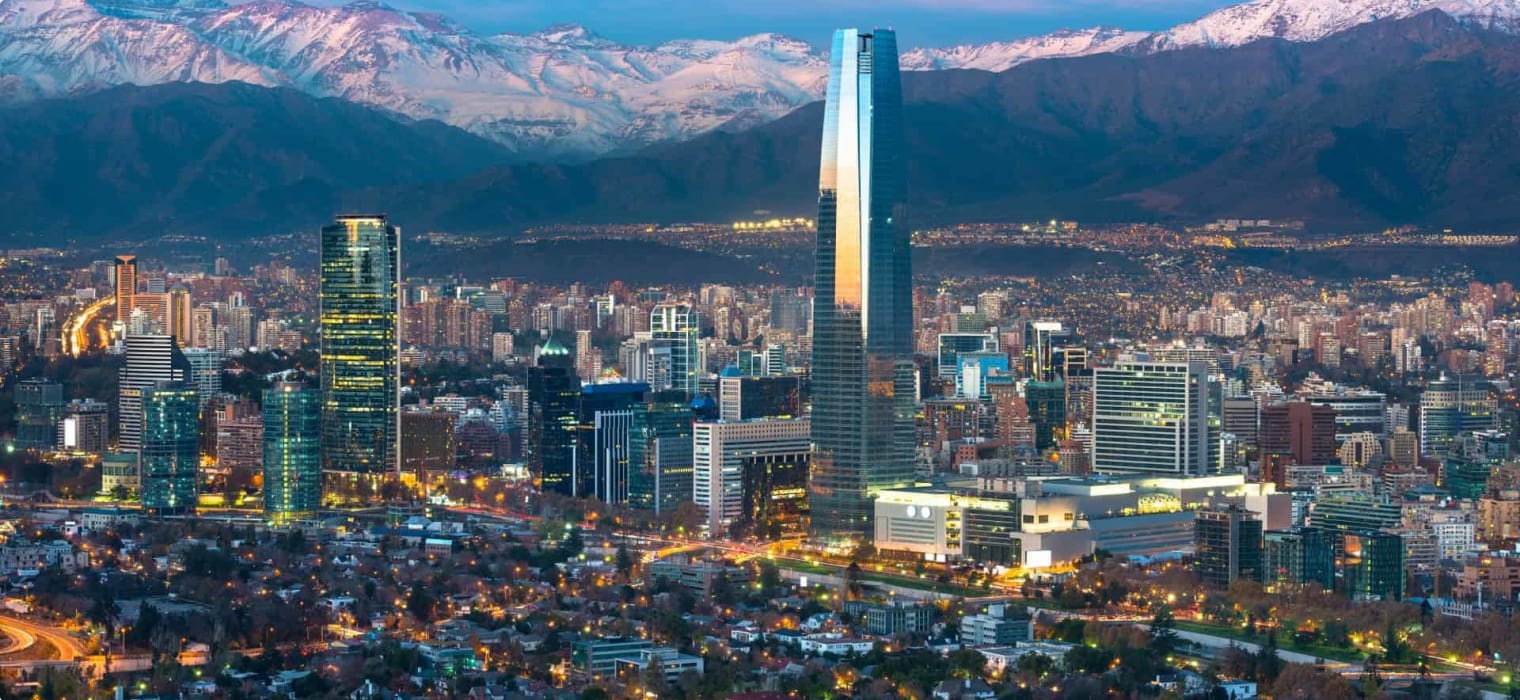
Chile is an extraordinary country, covered every inch by scenic landscapes, incredible wildlife, and long-standing culture. The tumultuous history undertaken since the time of Spanish colonisation and on the road to a sustainable democracy has made a lasting mark on its culture and people and is evidenced in its cities scattered across the country. This article will provide a brief snapshot of Chile, including its history, top cities and landmarks, for travellers looking for adventure in this beautiful South American country.
Quick Facts
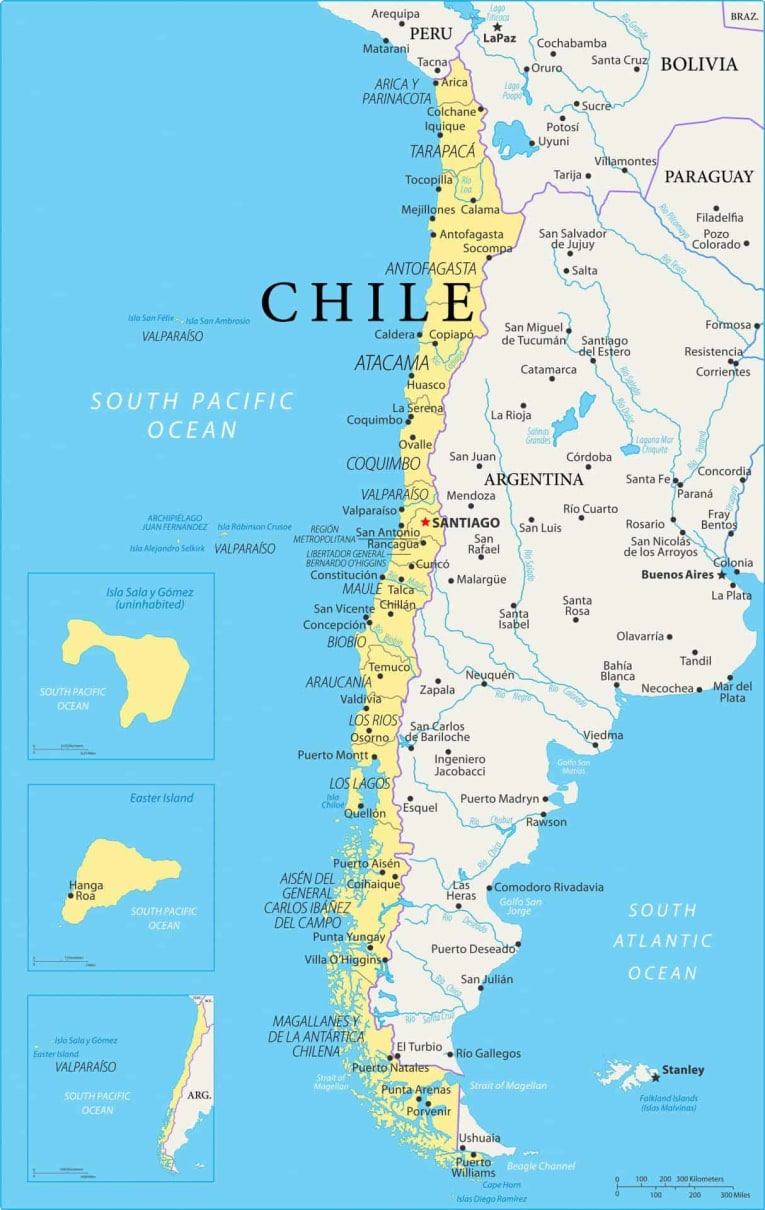
Capital: Santiago
Population: 18.34 million
Size: 756,950 km²
Official language: Spanish
Traditional Dishes: Cazuela, Humitas, Pasteles de Choclo
Popular Wines: Cabernet Sauvignon, Carmenere
Top Exports: Copper, Fish, Wine
Currency: Peso (CLP)
Chilean History
Pre-colonial Period
The oldest evidence of people inhabiting the Chile dates to 33,000 BC ago. At the Monte Verde archeological site, a vast number of artifacts that verify human existence in southern Chile. In 1980s, a small footprint was discovered and dated to 12,500 years ago. This discovery evidences inhabitance in South America older than previously thought, disproving the Clovis paradigm, a theory which states humans first migrated to the Americas via the Bering Strait. The earliest peoples living in Chile were the Araucanians, who were later subcategorized into three groups by the Spanish: the Picunche in the north, the Mapuche in the middle valleys, and the Huilliche in the south. The Araucanians lived more or less contently under Incan rule for much of the 15th century until Spanish colonisation. They were primarily farmers of maize, beans and other crops as well as fishing communities.
Spanish Colonisation
Without concern for the people already living in the area, Spain and Portugal divided land ownership of Southern America in the Treaty of Tordesillas, on June 7 1494 and set out to conquer their respective territories. In 1520, Ferdinand Magellan became the first European (a Portugese-born Spanish captain) to enter the territory of now-Chile. Ferdinand traversed what was later dubbed the Magellan Strait, in the southern Chilean islands, before continuing his journey to become the first European to cross the Pacific Ocean. In 1535, Conquistador Diego de Almagro entered Chile to settle it in the name of Spain. Their nearly 11,000-strong entourage dwindled in the freezing conditions travelling over the Andes (Lonely Planet Guide to Chile and Easter Island 2015) And after their difficult journey, they were ultimately unsuccessful in overcoming the Araucanian resistance. Five years later, in another attempt to claim the land for Spain, Pedro de Valdivia along with 150 compatriots founded Santiago. The Araucanian people fought back in the same year and completely uprooted the settlement. But the colony survived and continued to grow in population. The colonies brought in a distinctly European style to new buildings and ways of life. They also introduced wine vineyards to the region in 1548. All the while the resistance from the Araucanian people, and especially the Mapuche people, continued well into the 1880s in a battle know as the Arauco War.
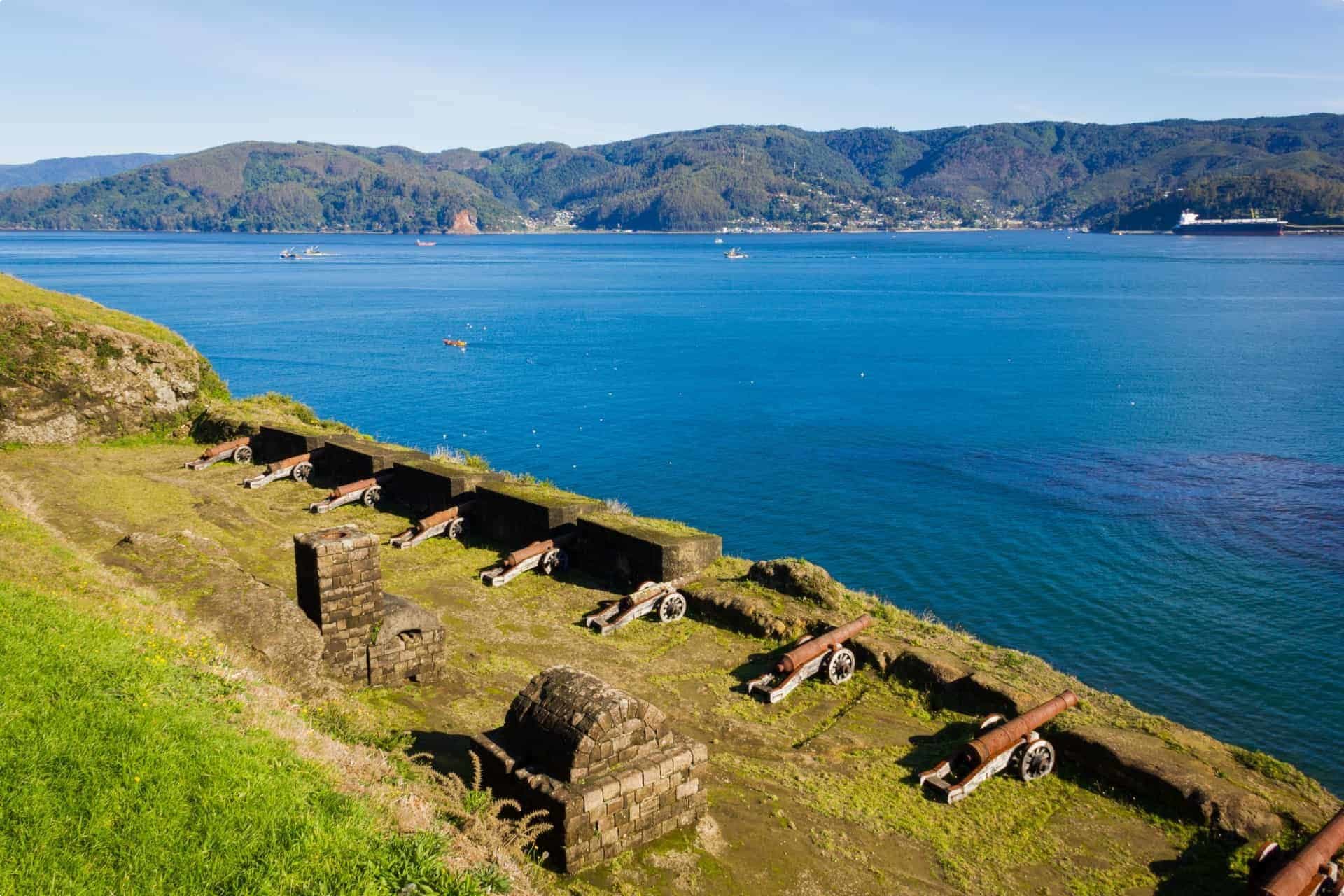
The Revolution for Independence
The 1800s saw a independence movements sweep across almost all of South America. Not only were regions pulling away from the Spanish empire, but a number of them, for example Venezuela and Argentina, were marching on other regions to expand their territory. Argentina, in particular, climbed over the Andes to push their border further into Chile. On September 18, 1810, Chile declared itself an autonomous republic in response to Napoleon’s overthrow of the Spanish king. This first period of independence would only last four years before Spain re-anoints Chile as a Spanish colony. However, the Chilean people revolted and called for permanent independence from Spain, which they were granted in 1818. Despite the breif relapse to a Spanish colony, September 18th remains a public holiday to celebrate Chile’s independence.
Early Days as a Republic
Despite widespread independence across the continent, there was a lack of defined boundaries between the territories. As a result, several battles raged throughout the later part of the 19th century, this was referred to as the War of the Pacific. Despite some push from Argentina, the Andes remained a pretty stable border with Chile. Rather, the War of the Pacific primarily affected Chile at its northern borders with Peru and especially Bolivia. After major disputes over mineral-rich areas, including the Atacama Desert, Chile and Bolivia finalised their country boundaries in 1873 and created a pact for lower trade taxes and mutual assurance of territories. This did not last, however, as Bolivia attempted to increase taxes in the 1880s. Moreover, the border continued to be disputed until October of last year as it was a case submitted to the UN International Court of Justice to mediate over disagreements about whether Chile is obligated to negotiate with Bolivia over sovereign access to the Pacific Ocean. For the time being it appears as though the Chilean borders will remain as they are.
At roughly the same time as the first treaty with Bolivia, Chile was also engaged in a civil war, as a result of the wide disparage of wealth between the highest and lowest class citizens. In 1886, José Manuel Balmaceda was elected president and was the first to highlight the disproportionate wealth distribution in his electoral platform. In his first few years in power, he made a number of reforms and improvements to infrastructure, including to schools and hospitals. However, Congress was opposed to his work benefiting the poor. They impeached him, creating widespread anger from the people and the national army who supported him. Balmaceda supporters clashed with the navy that supported Jorge Montt, who was the presidential replacement introduced by Congress. This clash led to a congressional victory and the deaths of over 10,000 people.
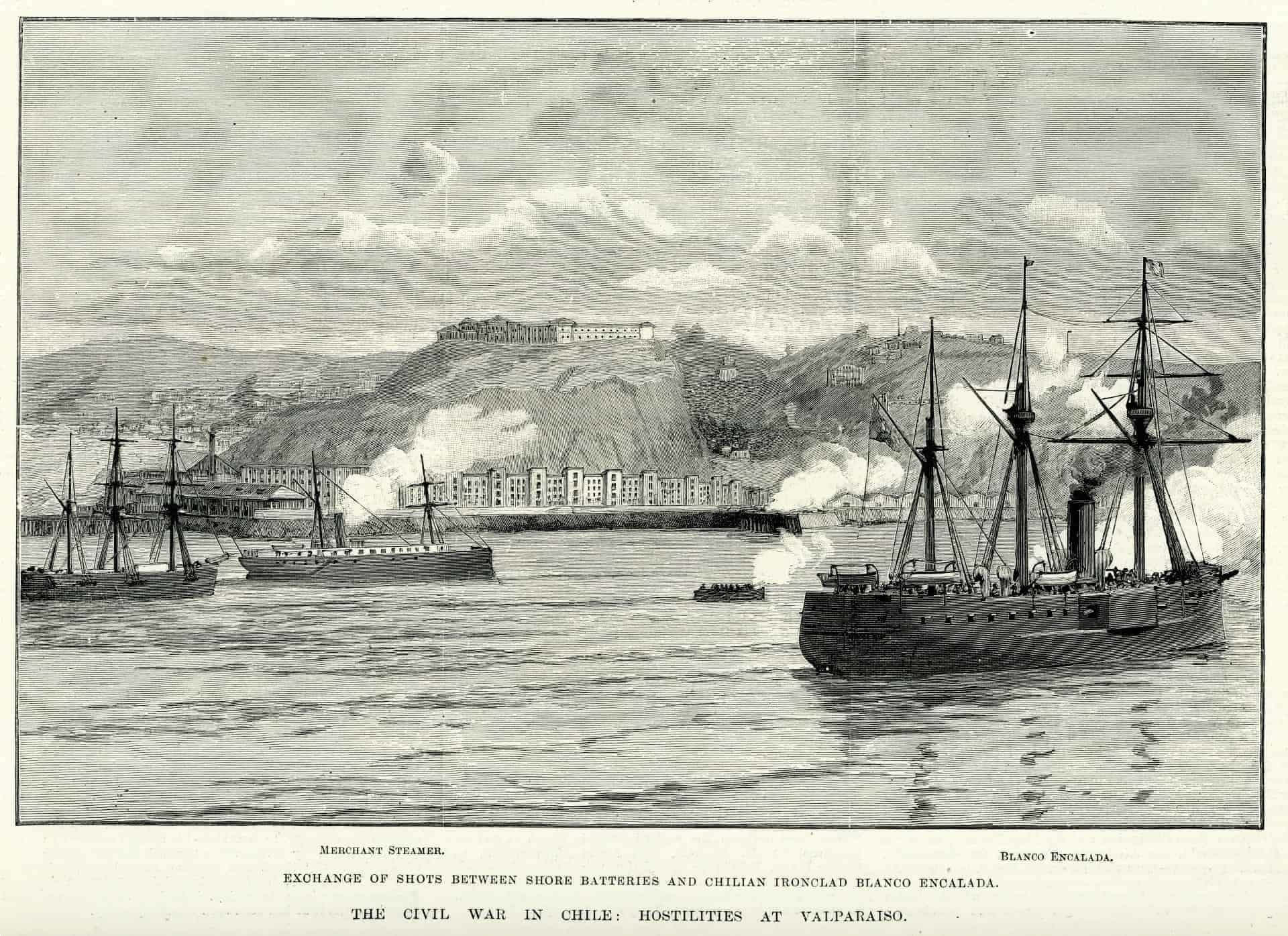
Modern Chile
In 1970, Salvador Allende was elected as the worlds first Marxist president to be voted in democratically. His election sparked numerous social reforms to improve the lives of Chileans and create greater nationalism. Allende increased government spending in an attempt to vamp up the economy in a time of recession and again redistribute wealth among citizens. But, in 1973 Augusto Pinochet led a military coup which ended in a dictatorship that lasted approximately 16 years. Under Pinochet’s forceful new rule, congress and most political parties were dismantled, leaving his word to be the all-powerful decree. Military force was a key tenant of his leadership, leading to nearly 35,000 being tortured and 3,000 “disappeared”, many of which were political opponents, according to Lonely Planet’s Chile and Easter Island guide (2015). Following the crumble of his harsh regime, democracy returned to Chile and Pinochet was deemed unfit to stand trial for the numerous murders carried out during his reign.
21st-century Chile has been replete with more leftist governments and remains a relatively stable democracy. Several social reforms were made to eliminate former conservative traditions, including rights to divorce and abolishing the death penalty (Lonely Planet 2015). In 2006, Chile elected its first female president, Michelle Bachelet, who further pursued social reforms for two terms. As of 2018, the current Chilean President is Sebastián Piñera.
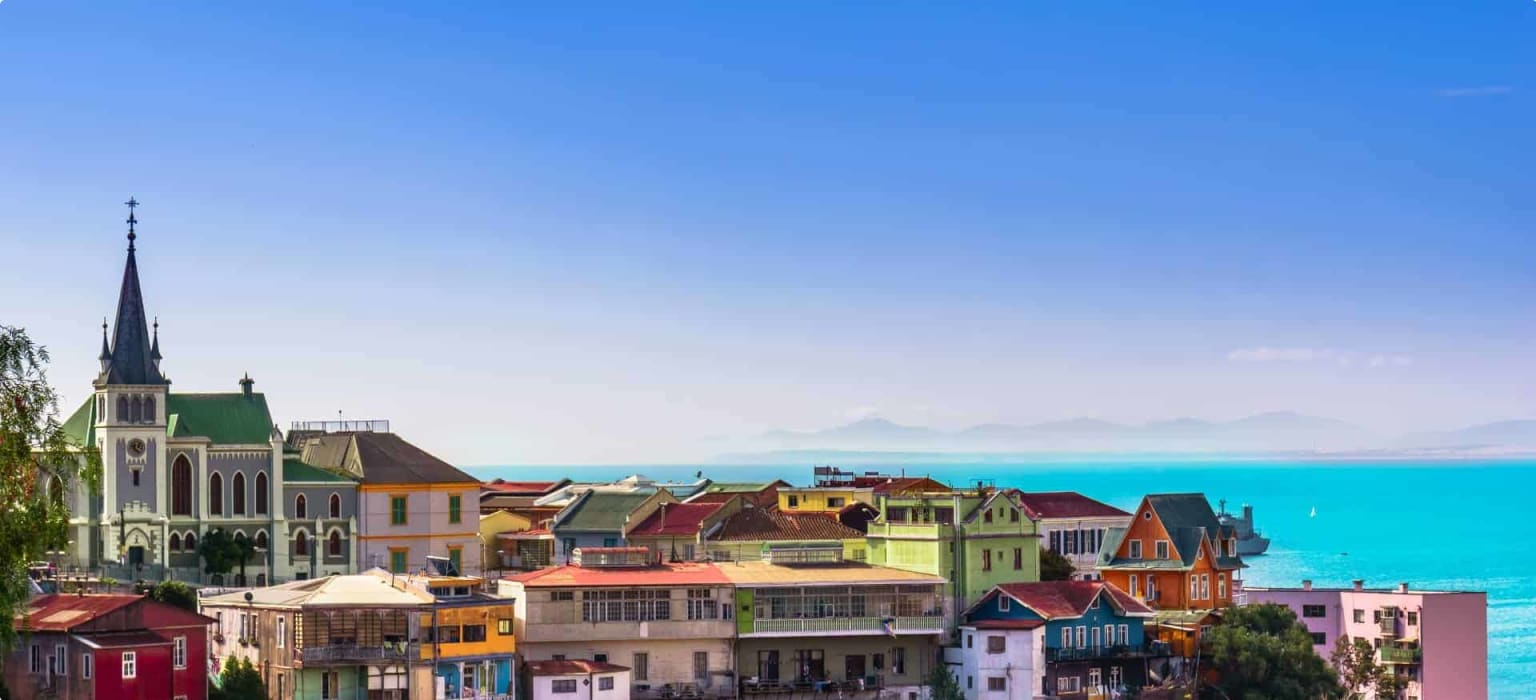
Traveling to Chile
Chile is an ideal destination for any traveller. The relatively small country is home to a wide variety of climates, from the dry heat in the north, to the damp cold in the south. As a result, it is host to a diverse range of flora and fauna, which became the subject of a five-year expedition conducted by Charles Darwin in the 1830s (Lonely Planet 2015). Additionally, its vibrant cities showcase a mix of colonial and modern architecture and locals are friendly and welcoming.

North to South:
The northern regions of Chile are a natural oasis. In beach cities such as Arica, the weather is bright and warm year round. Nearby Lauca National Park is revered for its bird life, hot springs and volcanoes. Northern Chile is also a large source for mineral resources and home to UNESCO-listed Humberstone and Santa Laura Saltpeter Works. It is here that the remnants of nearly 200 saltpeter works reside as it was the largest deposit found in the world.
The world’s driest desert: Atacama
The Atacama desert is one of the driest on Earth. Some parts of the desert have not recorded any rainfall over the last 500 years, while on average only 15mm of rain touches Atacama sand in a year. However, in 2015 and again in 2017, two unexpected thunderstorms exploded across the desert and dropped fourteen years worth of rain in a single event. In these rare instances, nearly 200 species of wildflower, some of whose seeds layed hundreds of years in waiting, paint the once barren desert with beautiful hues. The Atacama also boasts a 3,000km² salt lake, called the Laguna Chaxa, which is home to a wide range of flamingo subspecies including the Andean, Chilean, and James flamingos.
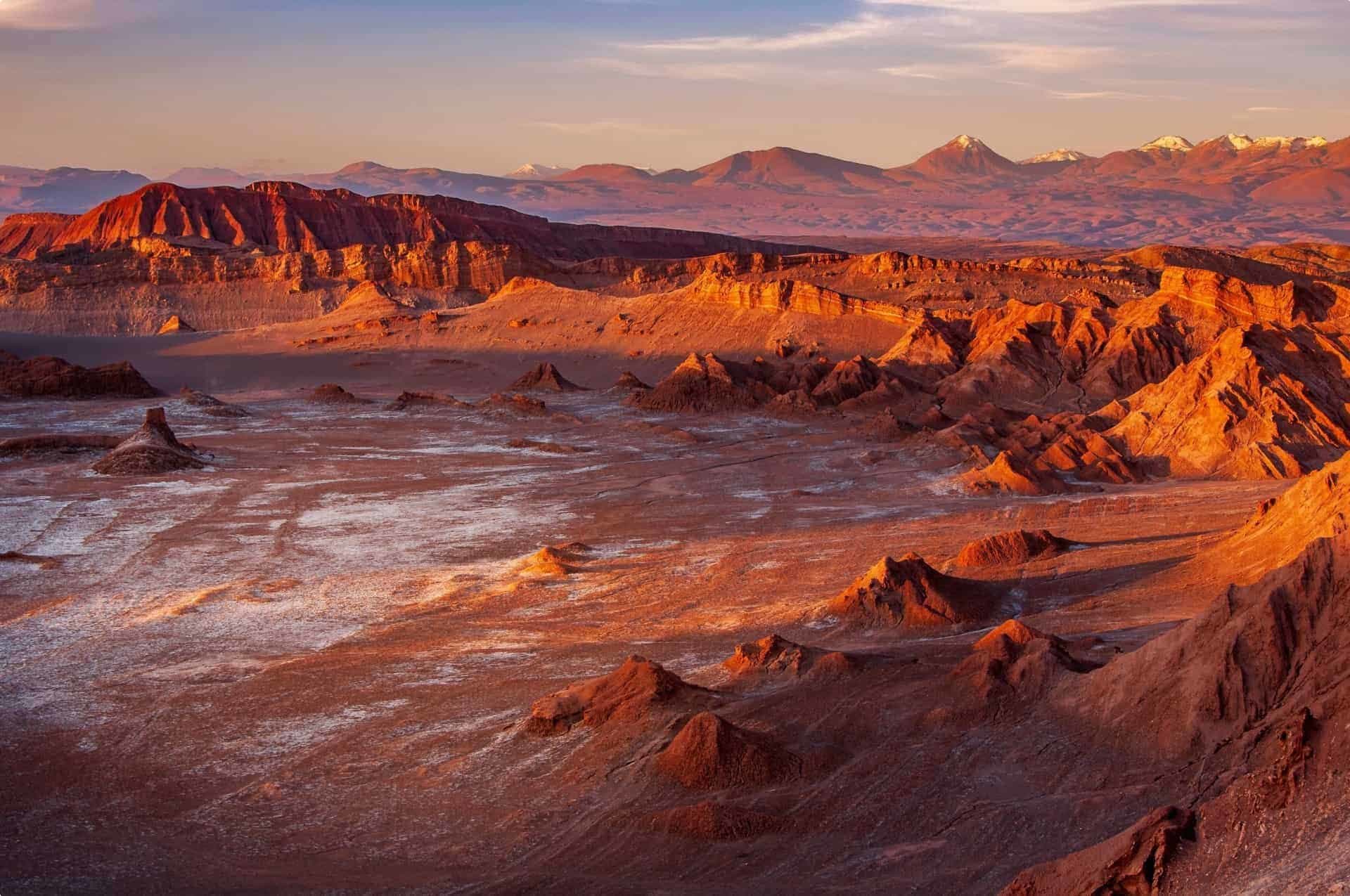
Sunset over Moon Valley, Atacama desert, Chile. NASA frequents this area to conduct tests and trainings, dubbing the area as ‘Mars on Earth‘.
Some of the most incredible stargazing can be done from the Atacama desert as clouds rarely form in the area protected by two mountain ranges, the Andes and the Chilean coastal, thereby creating a dual rain shadow. More importantly, the vast majority of the region is clear of any light pollution, allowing for the full brilliance of the star’s light to shine.
Valparaiso
Valparaiso was historically a fishing town, converted to a seaport for Spanish ships carrying vast riches of gold and natural resources to set sail from. It was a bustling trade town and center for banking for much of Chile’s history, until a large earthquake hit in 1906, leveling the majority of the town’s buildings. The people rebuilt the town with a rainbow of colours, and while its importance as a trade hub notably sunk with the opening of the Panama Canal in 1914, it remains the cultural capital of Chile (Lonely Planet Guide 2015). Its historic quarter was also distinguished as an UNESCO World Heritage site in 2003 for its long-standing history as an important hub. Valparaiso is the perfect town for a leisurely stroll in its numerous parks as well as for trips on ascensors (cable cars) used for transportation up Valparaiso’s steep facade.
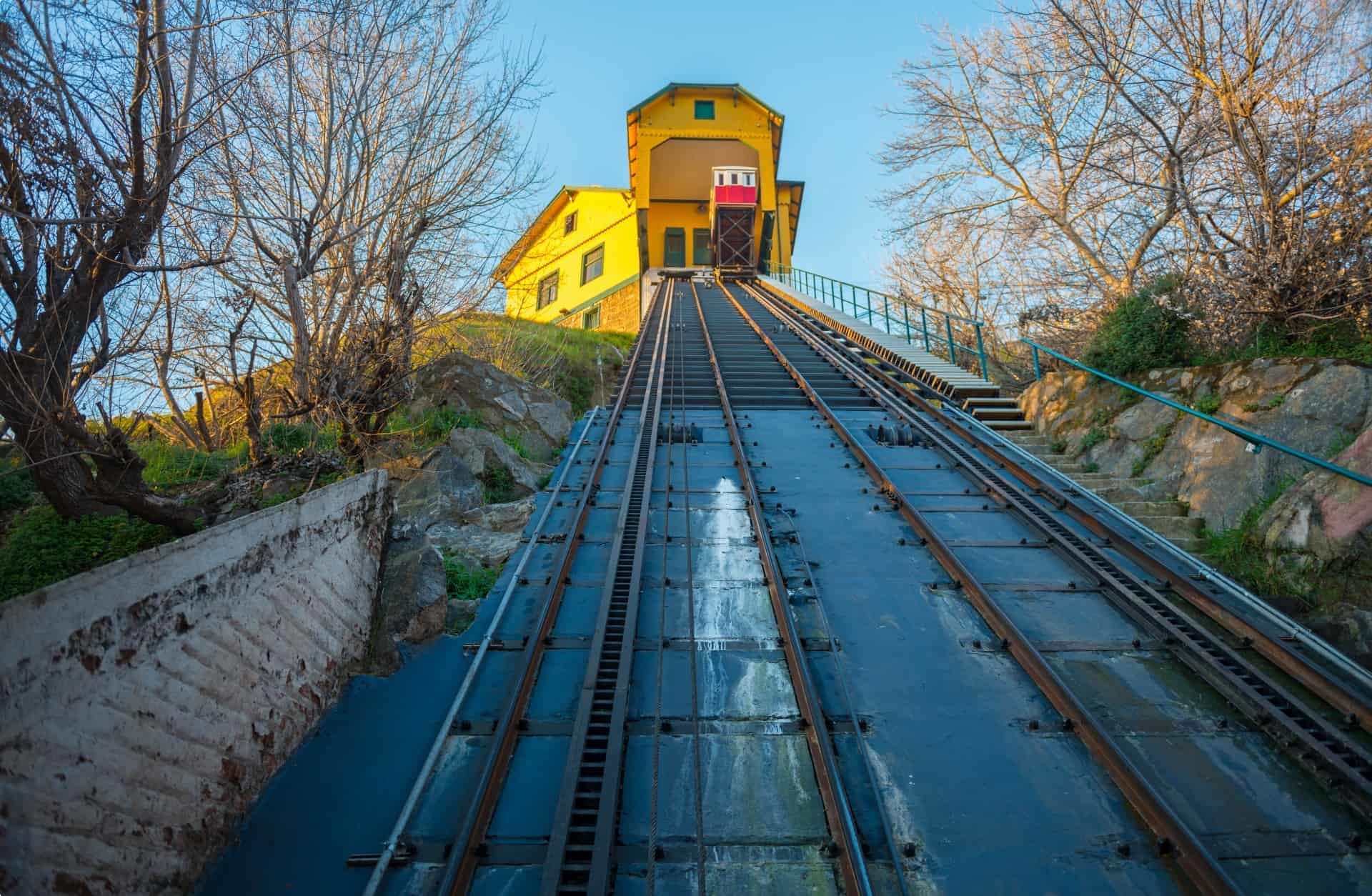
Santiago
As one of Chile’s oldest sites, and its capital, Santiago is a sight to behold. As the first major establishment of Pedro de Valdivia’s journey, the city withstood the test of time, natural elements and Aruacanian pressure, to grown into the metropolitan city it is today. While most of the country can be found rugged and uninhabited, Santiago is a bustling city, home to nearly 40% of Chilean citizens (Lonely Planet 2015). Some of its top sites include:
- La Moneda Palace acts as the centre for government. The building itself was designed to be a coin mint in 1805, but in just 15 years shifted purpose to house the president. In 1973, it was here that Augusto Pinochet staged his coup. The army attacked la Moneda, resulting in then-president Salvador Allende’s death.
- Museo Chileno de Arte Precolombino invites visitors to learn about indigenous art, including Mapuche totems, Andean textiles, Chancay pottery and so much more.
- Cerro San Cristobal, also known as the metropolitan park, allows for one of the best panorama views of Santiago. This 722-hectare park also encompasses a number of different sites including the Chilean National Zoo, and Japanese and Botanical Gardens, among others.
- Centro Gabriela Mistral is a performing arts centre named after Gabriela Mistral, Nobel Prize winning poet. Here you can watch a play or dance performance, admire its modern architecture, and wander through its art exhibits. For another interesting site connected with Nobel Prize winners for literature, you can visit La Chascona. This historic, marine-themed building was build by Pablo Neruda for his mistress.
- Costanera Centre is a complex to which the tallest building and the largest mall in Latin America belong. The Sky Costanera observation deck is 300 metres tall, providing stunning 360º vistas of Santiago.
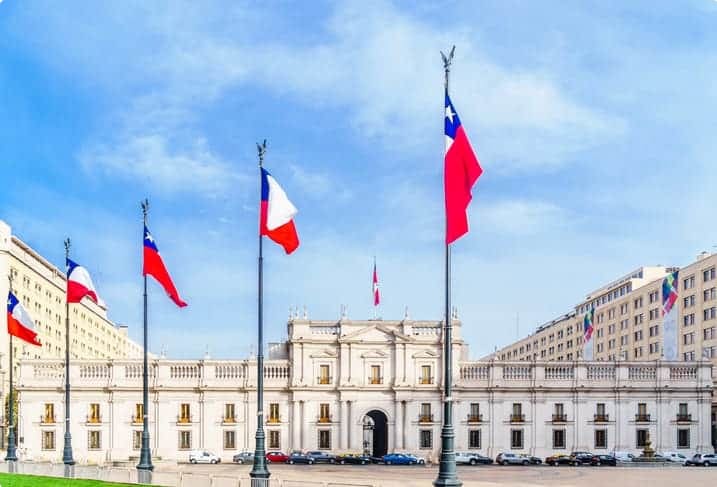
All around Valparaiso, Santiago, and the valleys south to Concepción are where the renowned Chilean vineyards are located. Chile is one of the top wine producers in the world given the fact that its climate is temperate and there are few pests to affect vine health. In 1548, Francisco de Carabantes was a catholic priest who brought the first recorded wine vines to the region. From that point on, the expanse and variety of Chilean wine grew. In the late 1800s French varieties were introduced after a crash in the French wine market caused by a phylloxera outbreak. Along with the import of vines, French winemakers, with their experience and skill, flocked to Chile. By 1877, wine became the country’s most lucrative agricultural business. This has only continued to skyrocket as a result of increased quality and variety, and wine now represents a $1.7 billion industry for Chile. Some the country’s specialties are cabernet sauvignon and carmenere for red, and savignon blanc and chardonay for white (Lonely Planet 2015)
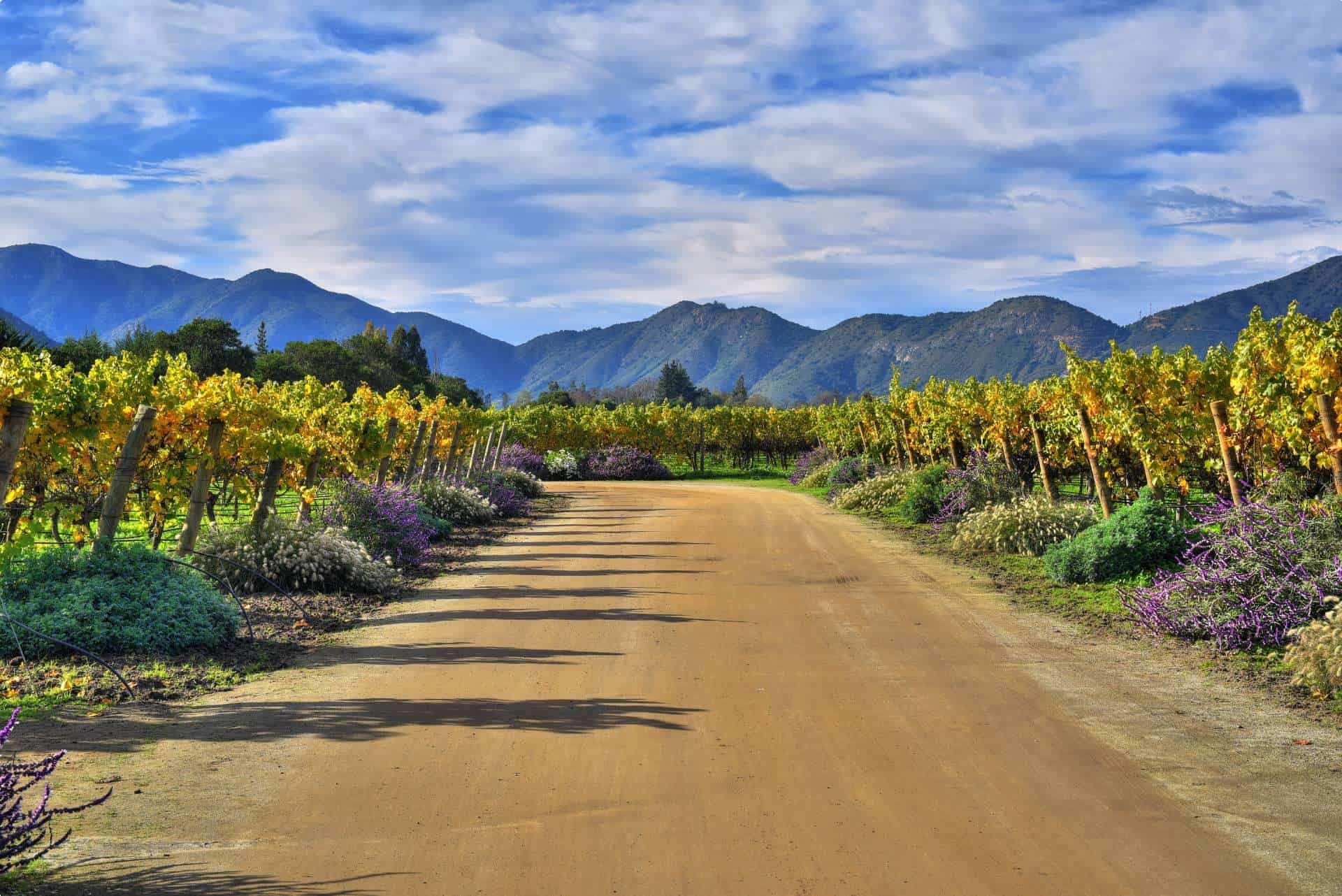
The beautiful Andes Mountain Range
The Andes mountain range is the longest in the world, and second tallest to the Greater Himalayas. They began forming some 30 million years ago through the collision of the Pacific and South American tectonic plates. Amid the tall peaks lie upwards of 2,000 volcanoes, both active and inactive. The Ojos del Salado volcano on the Chilean-Argentinian border is the highest active volcano in the world.
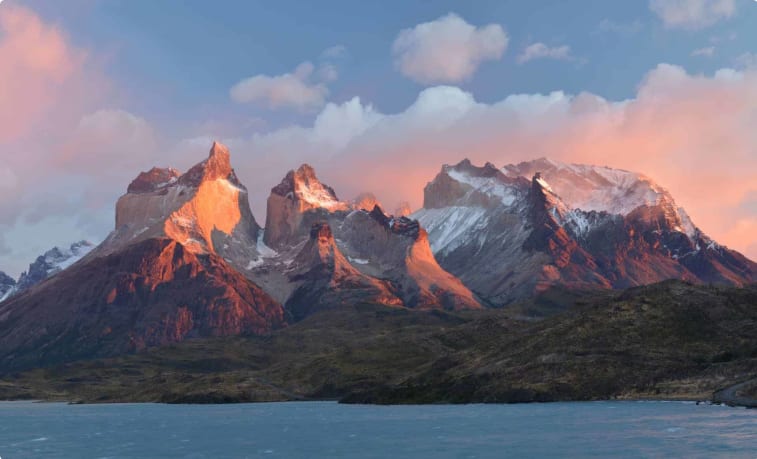
2,000m above the Andes base and 150km from Santiago is a small town of Sewell, which was inducted to the UNESCO World Heritage List in 2006. It is the site of the world’s largest underground copper mine, Chile’s top export. The all-but abandoned mining town was built upon the mountain face, and used its incline to benefit the industrial applications.
Additionally, the Andes are the location of another UNESCO site, Qhapaq Ñan, Andean Road System, which stretches 6,000 km across six countries from Chile to Columbia. The large network of roads for communication, trade and defense, date back to the time of the Incas.
Churches Chiloe
Yet another one of Chile’s top cultural sites are the churches on Chiloé Island. Recognised by UNESCO for their unique ‘wooden ecclesiastical architecture’. Approximately 70 churches remain on the main island and its surrounding islands, which are a testament to the Jesuit missionaries who came to the area in the 16th century. Each church is unlike the others in shape, size, and colour.
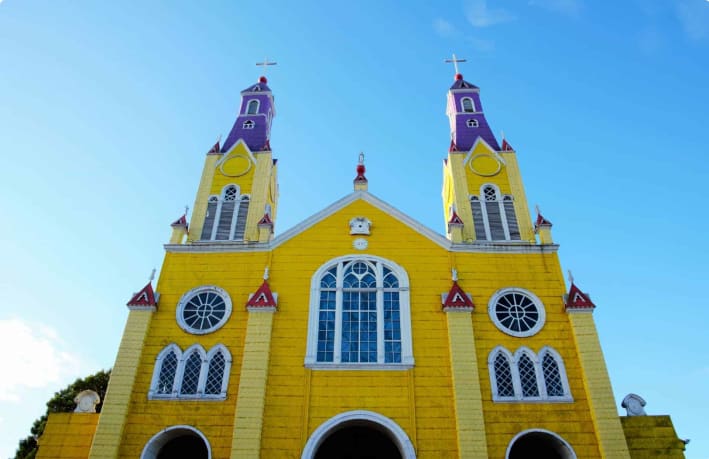
Glaciers
Approximately 80% of South America’s glaciers can be found in Chile. In fact, glaciers make up 2.7% of the country’s land cover. Some of the most extensive glaciers can be found in the Bernardo O’Higgins, Laguna San Rafael, and Torre del Paine National Parks.
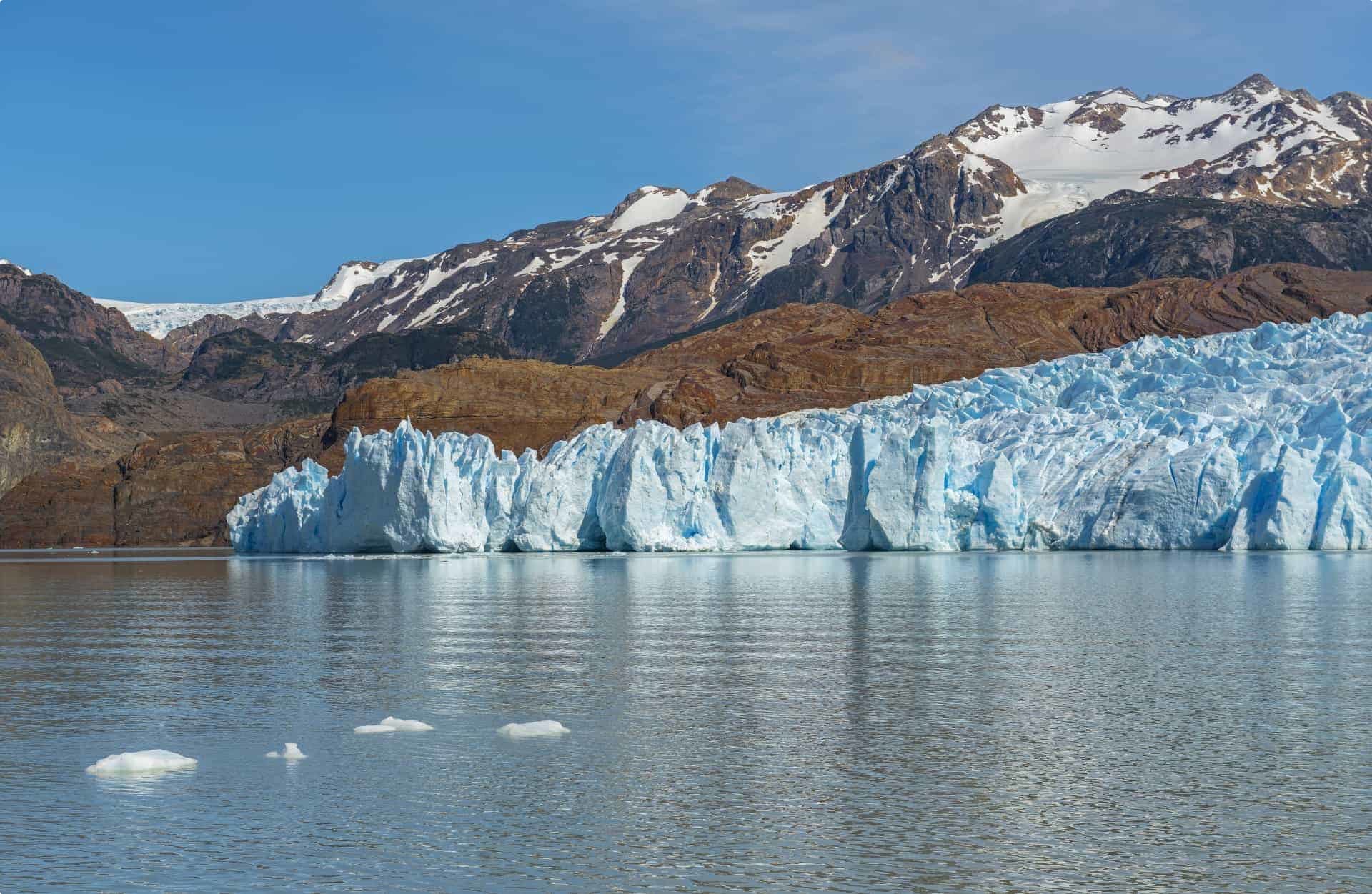
Easter Island
Dutch explorers named the island ‘Easter Island’ as it was Easter day that it was discovered in 1722. To its earliest inhabitants though, it remained Rapa Nui. The peoples who first lived on Rapa Nui were of Polonesian decent and were estimated to have first arrived around 300 to 400 AD. Today’s population is nearly 8,000. Tourism skyrocketed to the island in the 1960s when an airport was on the island.
There are over 600 stone figures, called Moai, for which the island is world famous and UNSECO heritage-listed. The island has attracted several archaeologists to study the Moai. These studies have evidenced that there are three distinct cultural periods on the island, and it was in the early (700-850 AD) and middle (1050-1680 AD) that the Moai were erected. In fact, it seems that prototypes were made in the early period for the middle period busts, that can still be seen today. Most of the Maoi are between 10 and 20 feet tall. What you may not know is that there are proportional bodies attached to the heads, burried beneath the ground. The bodies were likely to have been above ground at the time of their creation, but over time, mounds of dirt shifted to bury them up to their shoulders.
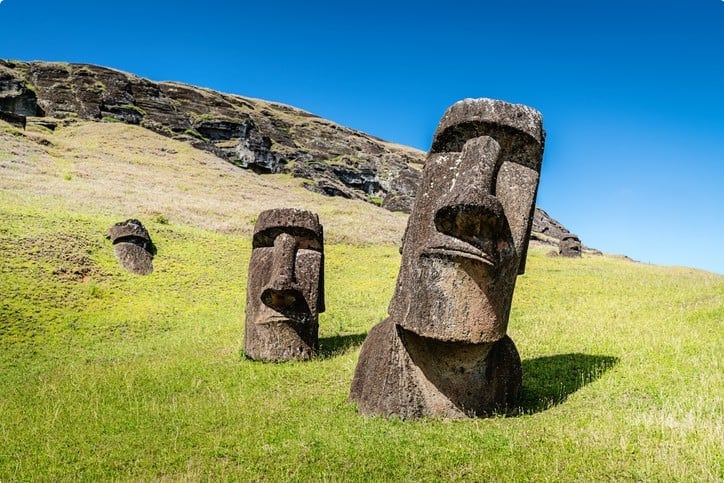
About Odyssey Traveller

Odyssey Traveller is committed to charitable activities that support the environment and cultural development of Australian and New Zealand communities. We specialise in educational small group tours for seniors, typically groups between six to 15 people from Australia, New Zealand, USA, Canada and Britain. Odyssey Traveller has been offering this style of adventure and educational programs since 1983.
We are also pleased to announce that since 2012, Odyssey Traveller has been awarding $10,000 Equity & Merit Cash Scholarships each year. We award scholarships on the basis of academic performance and demonstrated financial need. We award at least one scholarship per year. We’re supported through our educational travel programs, and your participation helps Odyssey Traveller achieve its goals.
For more information on Odyssey Traveller and our educational small group tours, do visit and explore our website. Alternatively, please call or send an email. We’d love to hear from you!
